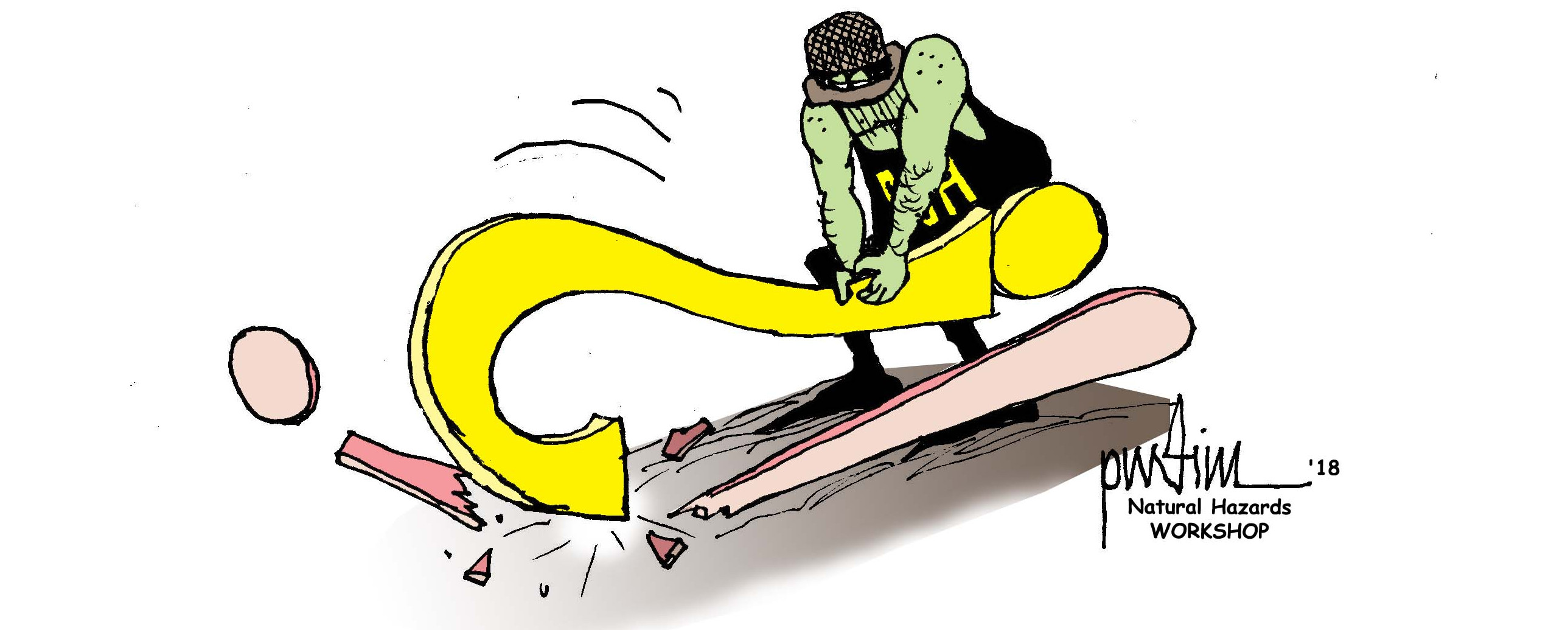
Twenty Questions: Looking for Answers to Reduce Disaster Risk
Natural Hazards Workshop Theme
Experts are still tallying the deaths, damages, and destruction from the succession of disasters that devastated communities in the United States and around the world in 2017. Although they will continue quantifying the losses for some time, estimates suggest this past year was one of the costliest for disasters on record.
While 2017 was indeed a historic year, these events must be placed in the context of an ongoing pattern of soaring losses linked to poor land use planning, unsustainable development, population growth in high-risk areas, rising economic inequality, and myriad other social and environmental processes.

Although important technical and policy interventions have reduced the number of disaster-related deaths globally, the human toll of these events remains terribly high. This past year alone, hundreds of millions of people experienced profound disruption as a consequence of a seemingly unending series of monsoons and mudslides; droughts and heatwaves; earthquakes and floods.
These are pressing times that require serious consideration of questions that are crucial to our current and future prospects on this planet. To that end, the 2018 Natural Hazards Workshop will be organized around the theme of Twenty Questions: Looking for Answers to Reduce Disaster Risk. We look forward to working with members of the community to answer these essential questions and to introduce new ways of thinking and acting to reduce the harm and suffering caused by disaster and to improve the quality of life for all.
Thank you for contributing to the Workshop this July. If you want to learn more about the event, and the thinking that informed this year's theme, please see this Director's Corner post. On behalf of the entire Natural Hazards Center team, we hope you know how grateful we are for all that you do to make this world a safer and more equitable place.
Please take care of yourself and others.
Lori Peek, Director
Natural Hazards Center
- Question 1: What is our moonshot—that big, exploratory, ambitious, groundbreaking idea—for the hazards and disaster community?
- Question 2: What environmental and social conditions produce cascading disasters, and how do they, in turn, ultimately influence what society can deal with and what it cannot?
- Question 3: How can the public sector, investors, and capital markets be encouraged to invest in risk reduction and resilience building activities?
- Question 4: To what extent, and under what conditions, do culturally competent initiatives increase representation of and reduce disaster vulnerability among underserved communities?
- Question 5: We know that natural hazards mitigation saves, but where do we go from here?
- Question 6: How can we best encourage a culture of preparedness, communicate risk, and promote meaningful action from the public?
- Question 7: How do we align research questions and policy applications to save lives, reduce injury, and improve mental health outcomes in disaster?
- Question 8: In light of recent catastrophic environmental extremes, how can we ensure that communities that experience “low-attention” disasters get the resources and support they need?
- Question 9: How do we plan for just and equitable disaster recovery?
- Question 10: How useful is the continuing expansion of disaster research and its regular creation of new concepts and jargon?
- Question 11: How do we best use hazards information to reduce disaster losses?
- Question 12: How do we continue to address the needs of vulnerable populations in emergencies, while also working more systematically to reduce social, economic, and health disparities?
- Question 13: How can we imagine equitable and resilient infrastructure design when so much of our existing infrastructure is in such dire need of repair?
- Question 14: If there is no such thing as a “natural” disaster, then who should be held responsible when catastrophe strikes?
- Question 15: Considering the investments being made in emergency response and recovery in the areas affected by recent major disasters, how can we also ensure resources and attention are dedicated to those who are at high risk of disaster, but that haven’t recently experienced one?
- Question 16: How can we better coordinate post-disaster research and integrate the findings from those efforts into education, training, practice, and policy?
- Question 17: What would it take to build a national movement focused on hazards mitigation, while still supporting local, grassroots mitigation champions?
- Question 18: What did the 2017 disaster season teach us that we did not already know?
- Question 19: How do we ensure that those who care for survivors—the first responders, volunteers, and others caught up in the disaster aftermath—receive the proper health care and support that they need?
- Question 20: Why, if this is so easy, is it so hard? What is stopping us from taking decades of knowledge and moving it into action?